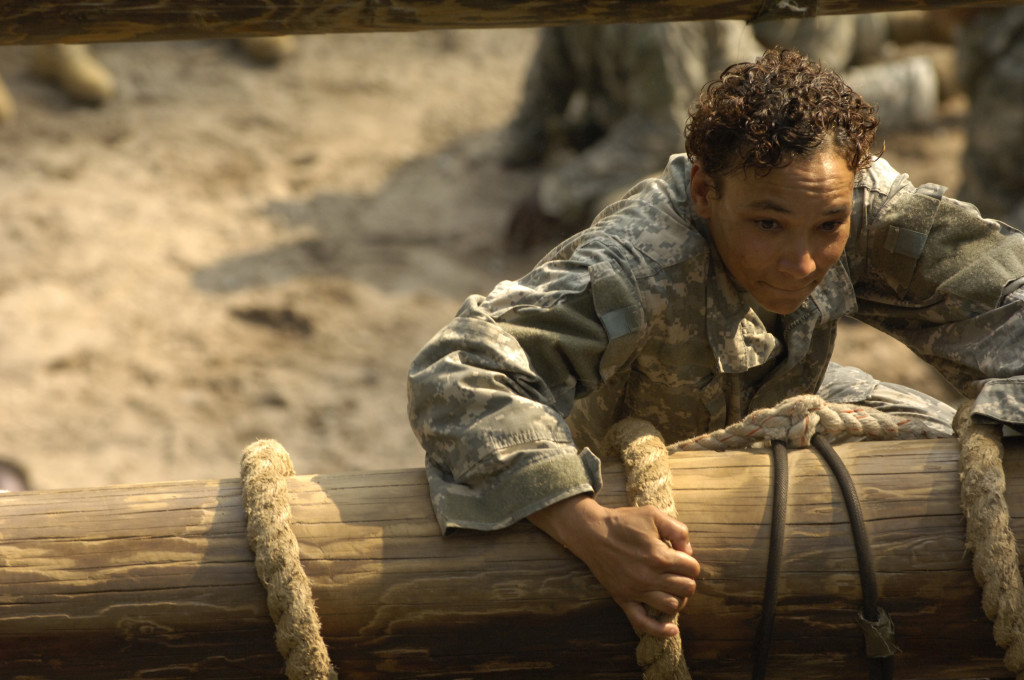General, Tear Down that Wall: Gender and the Infantry

For the past two centuries, two walls have stood in the way of integrating women into Army infantry — a Department of Defense policy preventing it and a fortified culture. The first wall was removed in 2013 with the rescission of the 1994 Direct Ground Combat Definition and Assignment Rule for women. Chief of Staff of the Army Gen. Mark Milley has until fall of 2015 to open the infantry to women or submit a request to keep it closed. The second wall, the historic cultural mindset that only a man can do the job of an infantryman, was just hit with a symbolic wrecking ball following the graduation of two female soldiers from the Army’s most valued school of leadership and infantry tactics — Ranger School. I believe both walls should fall and remain fallen forever.
There has been no shortage of media hoopla surrounding the graduation of Capt. Kristen Griest and 1st Lt. Shaye Haver from Ranger School, all of it helpfully shining a light on the positives. But the media attention underplays the significance of what just happened — this achievement deals a severe blow to over two centuries of deep-seated cultural opposition to the role of women in the infantry. This opposition stubbornly remains, but is now on the back foot.
I’ve served over 22 years as an infantryman in the Army. I attended and graduated Ranger School as a young enlisted soldier. I’ve served in airborne, light, and mechanized infantry units. I’ve served as an infantry platoon leader and company commander in combat. I’ve served two years as a Ranger instructor and have competed in the “Best Ranger” competition.
From private to major, being an infantryman has remained a core part of my identity. Like many others, I always considered my occupation a man’s job. My indoctrination into the Army and then the infantry included an assimilation of the values, beliefs, symbols, and quirky daily rituals. It is a proudly masculine subculture of mental and physical strength. I quickly learned the specific rules of my selected tribe by listening and watching. I learned the good, the bad, and the ugly of what was valued and what was shunned.
For instance, I learned that being a fast distance runner, having overall muscle strength, and being able to carry extremely heavy weight on my back for untold distances were expectations, not goals. Ditto for mental toughness and leadership under physical or mental stress.
Just as in any other subculture, these values are represented in our symbols. For the military these symbols of skills and strength are identifiable in what we wear on our uniforms. The most powerful one is the Ranger tab, a 2 3/8-inch x 11/16-inch tab worn on the left shoulder to signify the wearer as a graduate of Ranger School.
Ranger School is one of the toughest training regimens in the Army: 62 days in punishing heat or freezing cold, divided into three phases held in the woods of Ft. Benning in Georgia, the mountains of Dahlonega at the northern end of the state, and the swamps of Eglin Air Force Base down in Florida. Just to be admitted, students must pass a week of physical assessments that included pushups, sit-ups, a five-mile run, a 12-mile foot march, chin-ups, swimming, land navigation, several obstacle courses, and more. They have to learn infantry tactics and demonstrate leadership capability while executing those tactics during three field exercises that simulate continuous combat operations. Combined with sleep deprivation, long stretches of no food (a measly two meals per day) will impair anyone’s judgment and sap the body of strength and weight — it’s not uncommon to lose 30 pounds during the course of the training. The entire experience tests Ranger students’ ability to endure what they never thought imaginable and still lead troops to accomplish their assigned mission.
Ranger School is not a requirement to be in the infantry. But it is the most powerful symbol in the infantry. It should not be confused with the Ranger Regiment, an elite special operations unit composed of mostly infantry soldiers. Ranger School is just that — a school. It is an extremely challenging school that most males (over 60 percent) do not successfully pass. All infantry officers must attend the school and, as the saying goes, “An infantry officer either has a ranger tab, or he has a story.”
There is no physical or mental requirement to be an infantryman. The Army is working hard to set such occupational standards. But there is a crucible of mental and physical endurance that tests individuals’ infantry tactics and leadership under stress and that symbolizes the cultural core of the infantry — Ranger School. And two women just passed that test.
While the infantry comprises roughly 15 percent of the active-duty Army, it is also the largest, the oldest, and, at least among some circles, the most prestigious occupation in the Army. Like most of my fellow infantrymen, I thought this elite subculture would and should always stay male-only. Two female soldiers graduating from Ranger School last Friday just proved me and countless others wrong, piercing a cultural wall and forever changing the future role of women in combat.
Here’s to hoping both walls preventing women in the infantry receive a final push and come crumbling down.
Major John Spencer, a U.S. Army Infantry, has served in assignments from Iraq to the Pentagon and Italy to Washington State. The views expressed in this article are those of the author and do not reflect the official policy or position of the US Military Academy, Department of the Army, Department of Defense, or the U.S. Government.
Photo credit: The U.S. Army

